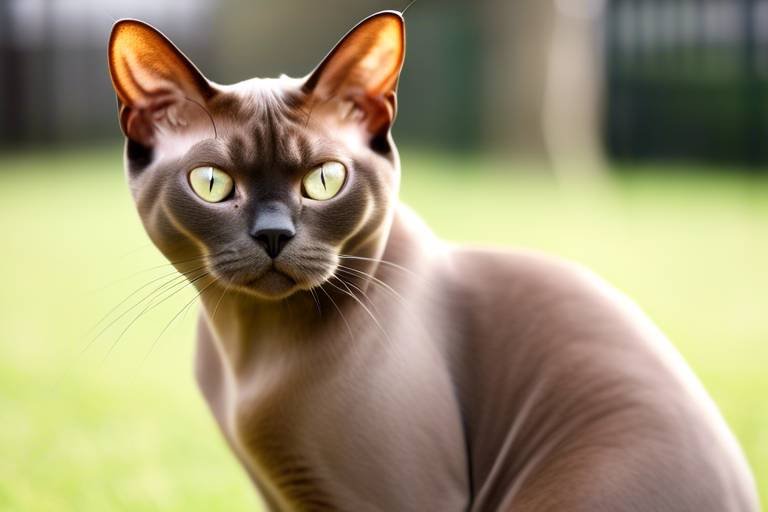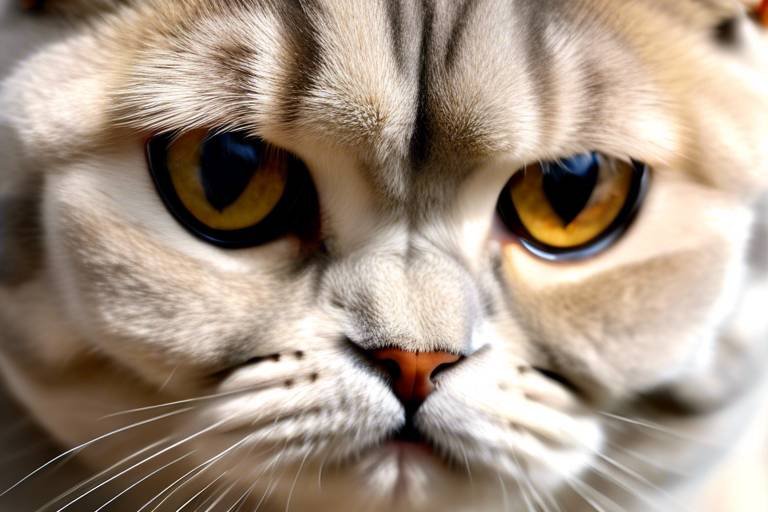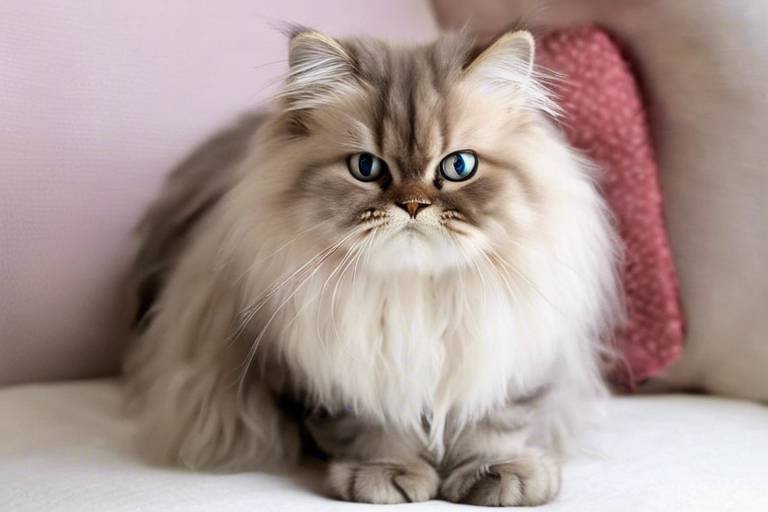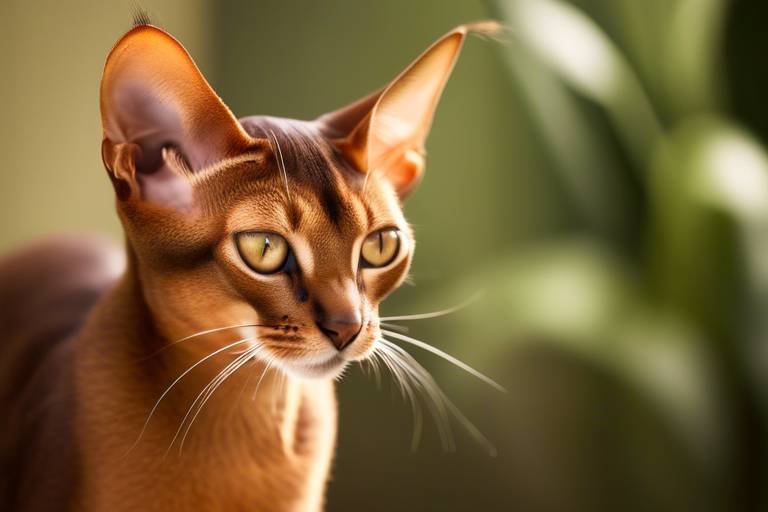Why the Burmese Cat Is Great for Families
Burmese cats are not just pets; they are family members that bring warmth, joy, and an abundance of love into a household. If you’ve ever thought about adding a furry friend to your family, the Burmese cat might just be the perfect choice. These charming felines are renowned for their affectionate nature, adaptability, and playful demeanor, making them ideal companions for families of all shapes and sizes. Imagine coming home after a long day, only to be greeted by a loving cat that seems to sense your every mood and is always ready to snuggle up on your lap. Sounds delightful, right? Let’s dive deeper into what makes these cats such wonderful additions to family life.
One of the standout traits of the Burmese cat is its loving personality. These cats are known for forming strong bonds with their human companions. They thrive on attention and affection, often following family members around the house as if they were their shadows. This strong desire for closeness makes them ideal pets for families seeking more than just a pet; they want a companion. Whether it’s curling up next to you on the couch during movie night or greeting you at the door when you come home, Burmese cats have a unique way of making you feel cherished and loved.
In addition to being affectionate, Burmese cats are highly active and playful. Their energy levels can bring a delightful spark to family life, transforming mundane moments into joyful experiences. Just picture your kids laughing as they engage in a game of chase with their new feline friend, or the cat’s playful antics providing endless entertainment. Burmese cats have a knack for keeping everyone entertained, making them a fantastic addition to any family dynamic.
Playtime is crucial for a Burmese cat's happiness. These cats thrive on interaction, and engaging them in games can not only provide them with the exercise they need but also strengthen family bonds. Think of playtime as a shared adventure; every toss of a feather wand or roll of a ball is an opportunity for laughter and connection. The more you play, the more your cat will feel like a valued member of the family.
Choosing the right toys and activities is essential for keeping a Burmese cat entertained. Here are some popular options:
- Feather wands
- Puzzle toys
- Laser pointers
- Interactive playsets
Each of these toys can stimulate their playful nature and keep them engaged, ensuring that your home is filled with joy and laughter.
Burmese cats are not only playful but also incredibly intelligent. They can learn tricks easily, which provides mental stimulation and enhances the bond between the cat and family members. Training sessions can be fun and rewarding, allowing your family to witness the cat’s cleverness. Imagine teaching your cat to fetch or even to sit on command—these moments can create lasting memories and deepen your connection.
Another reason Burmese cats are great for families is their inherently social nature. They enjoy the company of both humans and other pets, making them perfect for households that might already have furry friends. Their friendly disposition helps create a warm and welcoming family environment, where everyone—two-legged and four-legged—can coexist happily.
Burmese cats are remarkably adaptable, making them suitable for families living in different environments. Whether you live in a cozy apartment or a spacious house, these cats can adjust to their surroundings with ease. Their ability to integrate smoothly into family life ensures that your home remains a harmonious space.
When it comes to families with children, Burmese cats are generally very tolerant. Their playful nature and patience allow them to coexist happily with kids, making them a great choice for families. They often engage in gentle play and are less likely to become irritable when kids are around, which is a significant advantage for busy households.
Burmese cats can also get along with other pets, including dogs. Their sociable nature enables them to adapt to multi-pet households, contributing to a harmonious living space. If you already have pets, introducing a Burmese cat can be a smooth process, provided that everyone is given time to adjust.
- Are Burmese cats good with children?
Burmese cats are generally very tolerant and can coexist happily with children, making them great family pets. - Do Burmese cats require a lot of attention?
Yes, they thrive on interaction and affection, so they do require regular attention from their owners. - Can Burmese cats get along with other pets?
Absolutely! They are social creatures and can adapt well to multi-pet households.
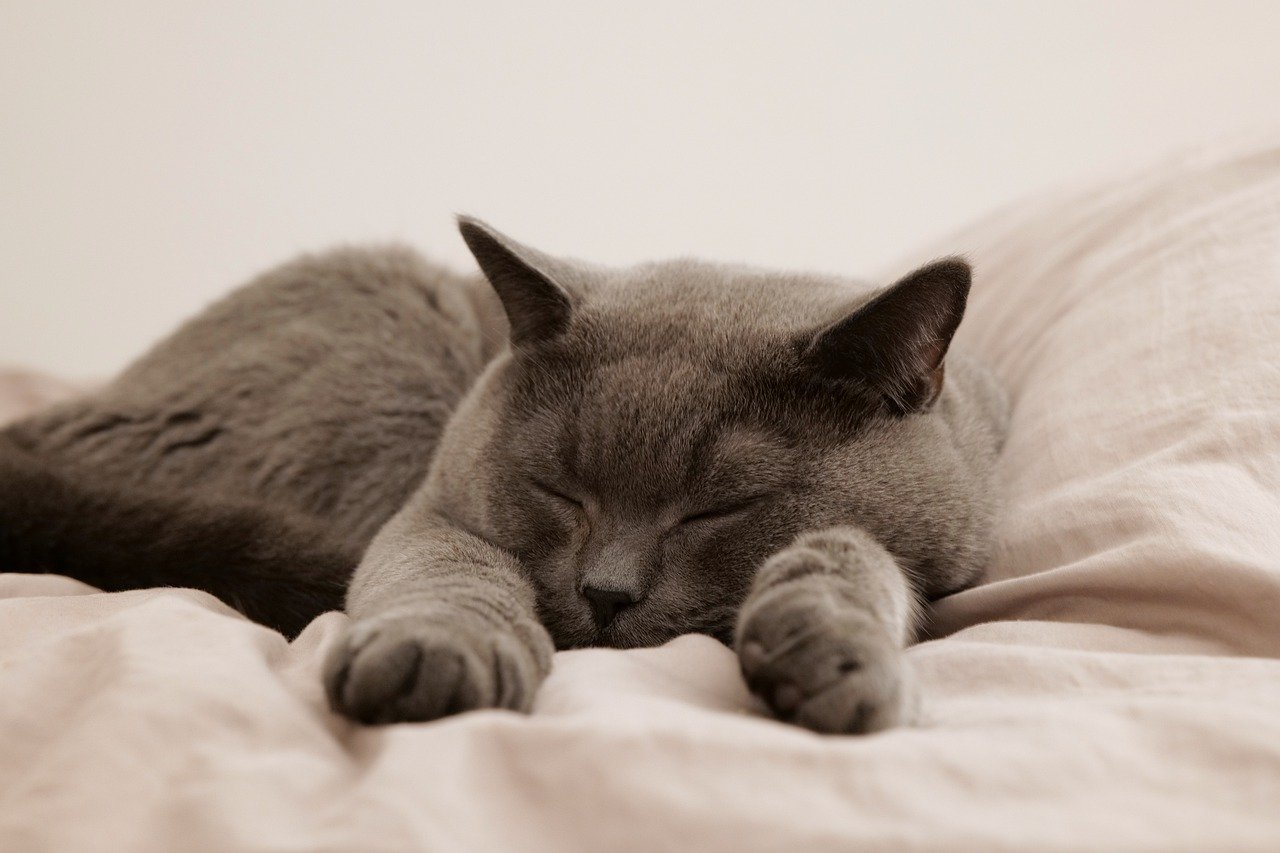
Affectionate Companionship
Burmese cats are renowned for their loving personalities, often forming incredibly strong bonds with their human companions. Imagine coming home after a long day, and there’s your furry friend, waiting by the door, ready to greet you with a gentle nuzzle. This kind of affectionate behavior makes them ideal pets for families seeking that extra touch of love and warmth in their lives. Their desire for closeness means they thrive on human interaction, often following family members from room to room, wanting to be part of every activity. It’s almost as if they believe they are part of the family, which really enhances the overall household dynamic.
One of the most endearing traits of Burmese cats is their playful affection. They not only enjoy being cuddled but also love to engage in playful antics that can bring a smile to anyone's face. Whether it’s a gentle paw on your leg or a playful pounce at a feather toy, their affectionate nature is evident in their interactions. They are known to curl up in laps, snuggle up to their favorite people, or even give little headbutts as a sign of love. This constant need for closeness and affection can foster a strong emotional bond between the cat and each family member, creating a sense of unity and joy in the household.
Furthermore, Burmese cats are incredibly intuitive. They can sense when you’re feeling down or stressed, and they often respond with comforting behaviors. Just picture this: you’re having a tough day, and suddenly, your Burmese cat jumps onto your lap, purring softly, as if to say, “I’m here for you.” This empathetic quality makes them not just pets, but true companions who can enrich your life in countless ways. In a family setting, their ability to connect emotionally with different members can help everyone feel more supported and loved.
In addition to their affectionate nature, Burmese cats are known for their playful demeanor. They are not just lap cats; they are active participants in family life. Their energy can be contagious, encouraging everyone in the household to join in on the fun. From chasing after toys to engaging in interactive play, they bring a vibrant energy that can uplift the entire family. This playful interaction not only keeps the cat entertained but also strengthens the bond between them and their human family members.
In conclusion, if you’re looking for a pet that offers , a Burmese cat might just be the perfect addition to your family. Their loving nature, playful antics, and emotional intelligence make them not only great companions but also cherished family members. So, if you’re ready to open your heart and home, a Burmese cat could be the affectionate friend you’ve been searching for!
- Are Burmese cats good with children? Yes, they are generally very tolerant and enjoy playing with kids.
- Do Burmese cats require a lot of attention? Yes, they thrive on interaction and companionship.
- How do Burmese cats get along with other pets? They are social creatures and typically adapt well to living with other pets.
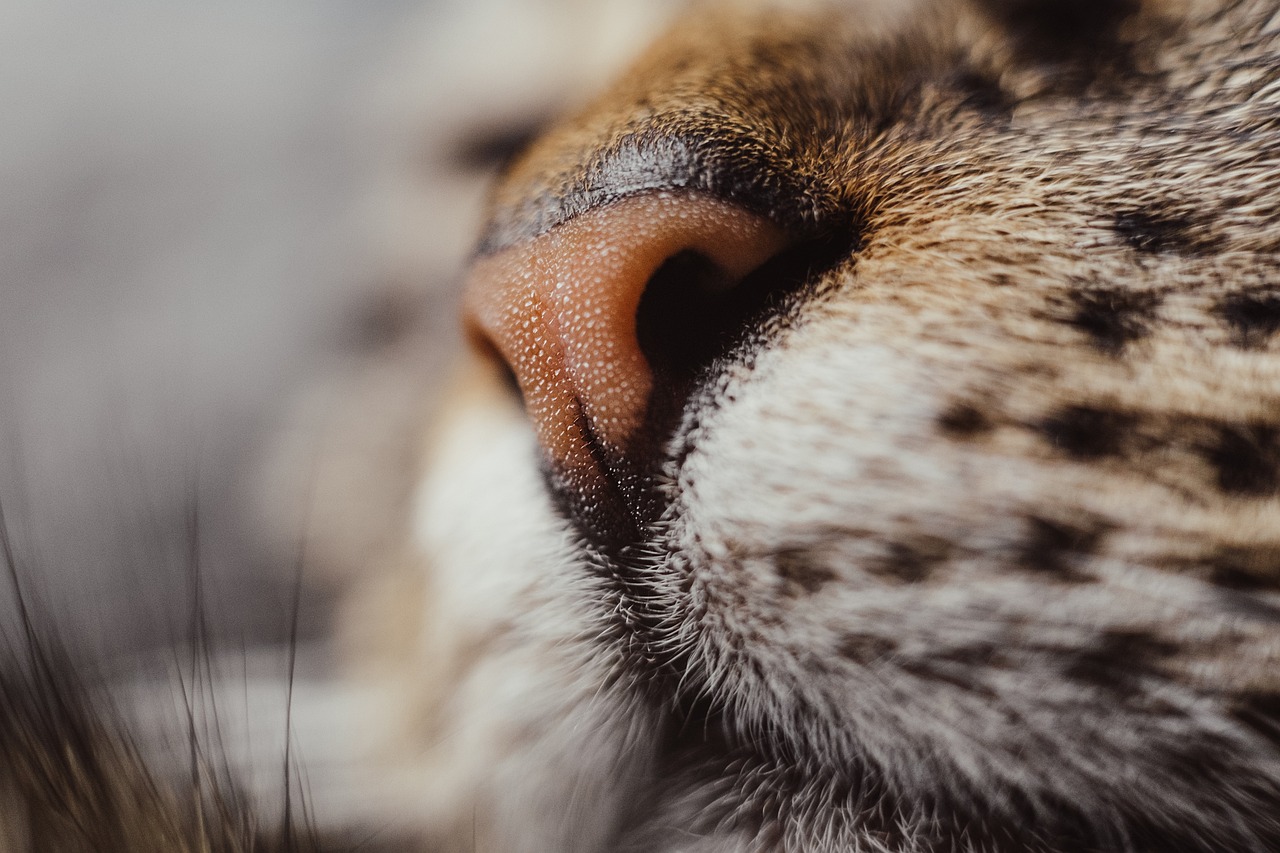
Playful and Energetic
Burmese cats are not just your average house pets; they are bundles of energy and joy that can light up any family gathering. Their playful and energetic nature is one of the many reasons why they make such fantastic companions. Imagine coming home after a long day, and there they are—your little ball of fur, ready to pounce into action. They thrive on playtime, and their enthusiasm is truly contagious. You'll find yourself laughing and playing along, forgetting all about the stresses of the day.
These cats are like the life of the party, always up for a game or a romp around the house. Whether it's chasing after a feather toy or engaging in a spirited game of hide-and-seek, Burmese cats have a knack for keeping everyone entertained. They don’t just play for the sake of it; their playful antics can engage children and adults alike, creating an atmosphere of joy and laughter in the household. It’s like having a little comedian in the family, always ready to perform and bring smiles to your faces.
Interactive playtime is essential for a Burmese cat’s happiness. These cats are incredibly social and love to bond with their human companions through play. By engaging them in games, you’re not just providing entertainment; you’re also fostering deeper connections within your family. Picture this: a lazy Sunday afternoon, the sun streaming through the window, and your Burmese cat darting around, chasing a laser pointer or batting at a dangling string. It’s these moments that create lasting memories and strengthen family ties.
When it comes to keeping your Burmese cat entertained, choosing the right toys is crucial. They are not picky, but they certainly have their favorites. Here are some popular options:
- Feather Wands: These are a classic choice that mimics the thrill of hunting, allowing your cat to leap and pounce.
- Puzzle Toys: These stimulate their minds and keep them engaged, offering rewards for their cleverness.
- Catnip Toys: Many Burmese cats go wild for catnip, making these toys a hit during playtime.
By rotating their toys and introducing new activities, you can maintain their excitement and curiosity, ensuring that playtime never becomes dull.
Did you know that Burmese cats are among the most trainable of all cat breeds? Their intelligence shines through when you teach them tricks. Not only does training provide mental stimulation for your furry friend, but it also enhances the bond between the cat and family members. Imagine teaching your Burmese cat to sit, high-five, or even fetch! It’s a fun way to engage with them and show off their talents to friends and family. The joy of watching your cat learn new tricks can be incredibly rewarding, making playtime even more special.
In conclusion, the playful and energetic nature of Burmese cats brings a unique charm to family life. Their love for interaction and play fosters a lively atmosphere, making every day an adventure. So, if you’re considering a pet that can keep up with your family’s energy and bring endless joy, a Burmese cat might just be the perfect fit!
Q: Are Burmese cats good with children?
A: Yes! Burmese cats are generally very tolerant of children and enjoy their playful company.
Q: How much exercise do Burmese cats need?
A: Burmese cats are quite active and require regular playtime to keep them happy and healthy. Aim for at least 30 minutes of interactive play each day.
Q: Can Burmese cats live with other pets?
A: Absolutely! Burmese cats are sociable and can get along well with other pets, including dogs.
Interactive Playtime
When it comes to keeping a Burmese cat happy and healthy, interactive playtime is not just a luxury; it's a necessity! These felines are bursting with energy and curiosity, and they thrive on engaging activities that stimulate both their minds and bodies. Imagine your living room transformed into a playground, where your Burmese cat leaps and bounds in pursuit of feathered toys or laser pointers, showcasing their acrobatic skills while bringing endless joy to your family. The beauty of playtime is that it creates an opportunity for family bonding, allowing everyone—adults and children alike—to participate in the fun.
But how do you ensure that your playtime is as engaging as possible? First, consider the types of activities that resonate with your Burmese cat. They love to chase, pounce, and explore, so incorporating a variety of toys is key. Some popular options include:
- Feather Wands: These toys mimic the movement of prey, tapping into your cat's hunting instincts.
- Laser Pointers: A classic choice that gets your cat zooming around the room, providing both exercise and entertainment.
- Puzzle Toys: These challenge your cat's intellect, rewarding them with treats for their efforts.
Each of these toys offers unique benefits, and rotating them can keep your cat's interest piqued. Additionally, engaging in interactive playtime not only satisfies their physical needs but also strengthens the bond between your cat and family members. Think of it as a delightful dance where everyone is involved, and laughter fills the air as your cat performs its antics! It's a great way to teach children about responsibility and empathy towards pets, as they learn to recognize when their feline friend is tired or needs a break.
Moreover, training your Burmese cat to perform tricks during playtime adds another layer of interaction. Teaching them to fetch a toy or respond to commands like "sit" or "high five" can be incredibly rewarding. It not only stimulates their mind but also fosters a sense of achievement for both the cat and the trainer. Just imagine the joy on your child's face when they successfully teach the cat a new trick! This interactive approach to playtime can significantly enhance your family's overall experience with your Burmese cat, creating cherished memories and a loving atmosphere in your home.
Q: How much playtime does a Burmese cat need daily?
A: Burmese cats are quite active and should ideally have at least 30 minutes to an hour of interactive playtime each day to keep them physically and mentally stimulated.
Q: What types of toys are best for Burmese cats?
A: Toys that mimic prey, such as feather wands and laser pointers, are excellent choices. Puzzle toys that challenge their intellect are also beneficial.
Q: Can children participate in playtime with Burmese cats?
A: Absolutely! In fact, involving children in playtime helps teach them responsibility and empathy towards pets, making it a rewarding experience for everyone.
Toys and Activities
When it comes to keeping your Burmese cat entertained, the right toys and activities can make all the difference. These playful felines thrive on stimulation, and as a family, you can play a significant role in ensuring that your furry friend remains happy and engaged. Think of your Burmese cat like a child in a playground; without the right equipment, they might just sit there, looking bored. So, what can you do to create an exciting playground for your cat?
First, consider investing in a variety of interactive toys. Feather wands, for instance, are a classic choice that can ignite your cat's hunting instincts. Imagine waving a feather in the air and watching your cat leap and pounce, as if they were chasing their prey in the wild. It’s not just fun for them; it’s a delightful show for you too! Additionally, puzzle toys are fantastic for mental stimulation. These toys challenge your cat to think and problem-solve, rewarding them with treats when they succeed. It’s like giving them a mini brain workout!
Another great way to engage your Burmese cat is through structured playtime. Set aside a few minutes each day to devote to play. You might be surprised at how quickly your cat learns to recognize when it's playtime! You could even create a little schedule for your family, ensuring everyone gets a turn to bond with the cat. This not only strengthens the bond between your family and your pet but also keeps your cat active and healthy.
Don’t forget about cat trees and scratching posts. These aren’t just furniture; they provide a vertical space for your cat to explore and exercise. Think of it as their personal jungle gym! A well-placed cat tree can offer hours of entertainment as your Burmese cat climbs, jumps, and surveys their kingdom from above. Plus, scratching posts help keep their claws healthy and away from your furniture, which is a win-win for everyone.
Lastly, consider rotating the toys every few weeks. Just like humans, cats can get bored with the same old toys. By introducing new or previously stashed toys, you can reignite their interest and keep playtime fresh and exciting. This simple act can transform an ordinary day into an extraordinary adventure for your Burmese cat.
- What are the best toys for a Burmese cat?
Interactive toys like feather wands, puzzle toys, and catnip-filled mice are great options. They stimulate both physical and mental activity.
- How often should I play with my Burmese cat?
It's recommended to engage in playtime for at least 15-30 minutes daily to keep them happy and healthy.
- Can I use homemade toys for my cat?
Absolutely! Many cats love simple items like crumpled paper balls or string. Just ensure that they are safe and supervised during play.
Training and Tricks
Training your Burmese cat can be an incredibly rewarding experience, both for you and your furry friend. These cats are not just adorable; they are also highly intelligent and eager to learn. This combination makes them perfect candidates for various tricks and commands. Imagine your cat performing a little dance or coming when called—it's not just a dream, it can be a reality!
To start training, it’s essential to create a positive environment. Use positive reinforcement techniques, such as treats and praise, to encourage your Burmese cat. For instance, when your cat successfully performs a trick, reward them immediately. This helps them associate the action with a positive outcome, making them more likely to repeat it.
Here are a few tricks that are particularly easy and fun to teach your Burmese:
- High Five: Start by holding a treat in your hand and encouraging your cat to reach for it. When they lift their paw, gently tap it and reward them.
- Come When Called: Use a specific word or phrase, like "treat time!" to call your cat, and reward them when they come to you.
- Roll Over: With patience, you can teach your cat to roll over by guiding them with a treat. Start with them lying down, then slowly move the treat to the side to encourage the roll.
Consistency is key! Short and frequent training sessions are more effective than long ones. Aim for about 5-10 minutes a day, and make sure to keep the mood light and fun. You’ll be amazed at how quickly your Burmese cat picks up on new tricks!
Moreover, training isn’t just about teaching tricks; it’s also about strengthening the bond between you and your cat. Each session is an opportunity to connect and communicate. Just like playing a game with a friend, training builds trust and understanding. So, grab some treats, and get ready for some fun!
Q: How long does it take to train a Burmese cat?
A: The time it takes can vary, but many Burmese cats pick up tricks within a few days to a couple of weeks, depending on the complexity of the trick and the consistency of training.
Q: What kind of treats should I use for training?
A: Use small, soft treats that your cat loves. This will keep them motivated and engaged during the training sessions.
Q: Can I train my Burmese cat to walk on a leash?
A: Yes! Burmese cats can be trained to walk on a leash, but it requires patience and gradual acclimation. Start by letting them wear the harness indoors before venturing outside.
Q: Are there any tricks that are too difficult for Burmese cats?
A: While Burmese cats are intelligent, some tricks may be challenging. Avoid overly complex tricks initially and focus on simple commands to build their confidence.
Social Nature
Burmese cats are truly the life of the party when it comes to family dynamics! Their inherently social nature makes them not just pets, but integral members of the household. Imagine coming home after a long day, only to be greeted by a furry friend who is genuinely excited to see you. This is the essence of a Burmese cat—always ready to shower you with affection and engage with you in playful antics. They thrive on human interaction and often seek out companionship, making them perfect for families who want a pet that is not just a bystander but a participant in family life.
These cats have a knack for forming strong bonds with each family member. Whether it’s snuggling up on the couch during movie night or following you around the house, they seem to have an innate understanding of when someone needs a little extra love. Their affectionate disposition encourages a nurturing environment, which can be especially beneficial for children as they learn empathy and responsibility through caring for a pet. The warmth and loyalty of a Burmese cat can turn any household into a loving home.
What’s more, Burmese cats are not just friendly towards humans; they also tend to get along well with other pets. This adaptability makes them a fantastic choice for families with multiple animals. Picture this: your Burmese cat curling up next to the family dog, or playfully chasing after a sibling cat. Their sociable demeanor allows them to coexist peacefully, creating a harmonious atmosphere. In fact, they often enjoy the company of other pets, which can help alleviate feelings of loneliness when family members are away.
To illustrate their social skills, here’s a quick overview of how Burmese cats interact in various scenarios:
| Scenario | Interaction Style |
|---|---|
| With Children | Playful and tolerant, often engaging in games and cuddles. |
| With Other Cats | Friendly and curious, usually establishing a hierarchy without conflict. |
| With Dogs | Generally accepting, can become playful companions with proper introduction. |
This table highlights just how versatile and sociable Burmese cats can be, adapting to different family dynamics with ease. Their playful spirit and affectionate nature not only enrich the lives of their human companions but also help to foster a sense of community among pets. In a world where connections matter more than ever, having a Burmese cat can truly enhance your family’s social fabric.
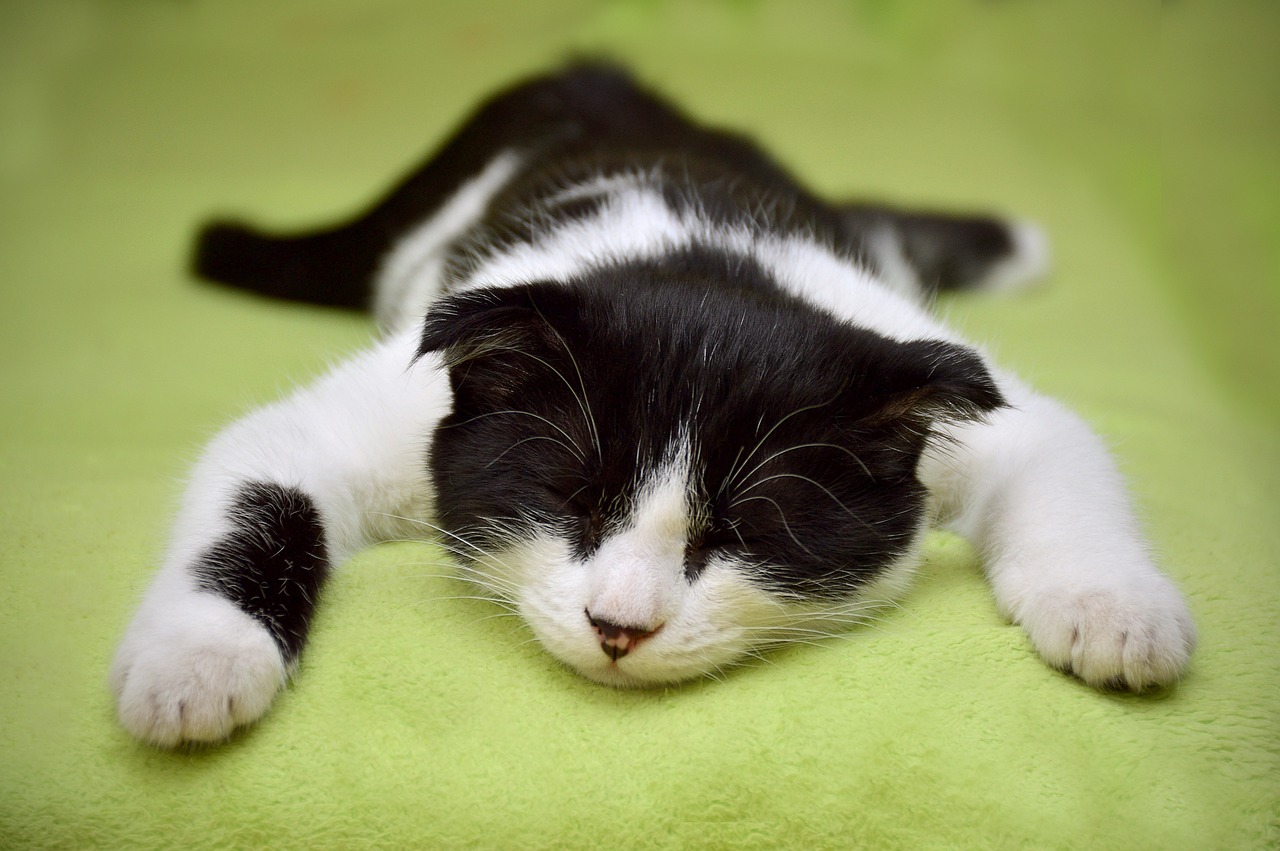
Adaptability to Family Life
Burmese cats are a remarkable choice for families due to their incredible adaptability. Whether you live in a bustling city apartment or a spacious suburban home, these feline companions can adjust to various living situations with ease. Their versatile nature allows them to thrive in different environments, making them a perfect fit for family life. Imagine having a pet that seamlessly integrates into your household, bringing joy and warmth without any fuss! That's precisely what you get with a Burmese cat.
One of the standout features of Burmese cats is their ability to adapt to the presence of children. They are generally known for their tolerant and patient demeanor, which means they can handle the occasional boisterous play or sudden movements from kids. Unlike some pets that may shy away from the chaos of a family environment, Burmese cats are often right in the thick of it, enjoying the attention and interaction. They thrive on being part of the family unit, which creates a beautiful bond between them and the children.
Moreover, Burmese cats are not just limited to coexisting with children; they also get along well with other pets. Their social nature makes them friendly and approachable, allowing them to form friendships with dogs and other cats. This is particularly beneficial for families that already have pets. Picture this: a playful Burmese cat and a friendly dog chasing each other around the living room, creating a lively atmosphere filled with laughter and joy. This harmonious coexistence can significantly enhance the family dynamic, leading to a more fulfilling and enjoyable household.
To illustrate how adaptable Burmese cats can be, let's take a look at some common family living situations and how these cats fit into them:
| Living Situation | Adaptability |
|---|---|
| Apartment Living | Thrives in smaller spaces, enjoys window perches and interactive play. |
| Suburban Homes | Loves exploring larger areas, can enjoy outdoor time in a safe environment. |
| Multi-Pet Households | Social and friendly, easily integrates with other pets. |
| Families with Children | Patient and playful, enjoys engaging with kids. |
In addition to their adaptability, Burmese cats also possess a unique charm that can light up any home. Their affectionate nature and playful antics not only bring joy but also create a sense of belonging and togetherness within the family. They are the type of pets that will curl up on your lap after a long day or playfully chase after a string, reminding everyone to enjoy the little moments in life.
- Are Burmese cats good with children? Yes! They are known for their patience and playfulness, making them great companions for kids.
- Can Burmese cats live in apartments? Absolutely! They adapt well to smaller living spaces as long as they have enough interaction and playtime.
- Do Burmese cats get along with other pets? Yes, they are social creatures and typically coexist well with other pets, including dogs.
- How much exercise do Burmese cats need? They are active cats that enjoy playtime, so regular interactive play is essential for their happiness.
Living with Children
Burmese cats are often regarded as one of the most family-friendly breeds, and when it comes to living with children, they truly shine. Their gentle demeanor and playful nature make them ideal companions for kids of all ages. Imagine a scene where your child is giggling as they chase their furry friend around the living room, or where a Burmese cat curls up next to your little one during storytime. It’s these moments that create lasting memories and strengthen the bond between children and their pets.
One of the remarkable traits of Burmese cats is their ability to tolerate the antics of children. Unlike some breeds that may shy away from the noise and excitement that kids bring, Burmese cats seem to thrive in such environments. They possess a unique blend of playfulness and patience, making them perfect for families who want a pet that can keep up with their energetic lifestyle. Whether it’s a game of hide and seek or a gentle cuddle session, these cats are always up for the challenge.
However, it’s essential to teach children how to interact with their feline friends properly. Here are a few tips to ensure a harmonious relationship:
- Gentle Handling: Encourage children to handle the cat gently to avoid any accidental injuries.
- Respecting Space: Teach kids to recognize when the cat wants some alone time and to respect that.
- Interactive Play: Engage in play sessions together, using toys that allow both the child and cat to enjoy the activity safely.
With a little guidance, children can learn to appreciate the affectionate nature of Burmese cats, leading to a rewarding relationship that benefits everyone involved. Furthermore, these cats often display a protective instinct towards their young human companions, creating a sense of safety and companionship that is invaluable.
In summary, living with Burmese cats and children can be an incredibly rewarding experience. Their adaptable nature and love for interaction make them an excellent choice for families looking to add a furry member to their household. As long as the children are taught to treat their pets with kindness and respect, the Burmese cat can become a cherished member of the family, providing love, laughter, and endless joy.
Here are some common questions about living with Burmese cats and children:
- Are Burmese cats good with young children? Yes, they are typically very tolerant and enjoy the company of kids.
- How do I introduce a Burmese cat to my children? Start with supervised interactions and teach your children how to handle the cat gently.
- Can Burmese cats handle a lot of noise and activity? Absolutely! They thrive in lively environments and love to be part of the family fun.
Coexisting with Other Pets
Burmese cats are known for their adaptable nature, which makes them excellent companions not just for humans, but also for other pets. If you're a family with existing pets, you might be wondering how a Burmese cat would fit into the mix. The good news is that these felines are generally sociable and can coexist harmoniously with various animals, including dogs, other cats, and even smaller pets like rabbits or guinea pigs.
One of the key traits of Burmese cats is their friendly disposition. They are often described as people-oriented, which translates well into their relationships with other animals. When introducing a Burmese cat to your household, it's important to consider a few factors:
- Gradual Introduction: Start by allowing your pets to sniff each other under a door or through a gate. This helps them get used to each other's scent.
- Supervised Meetings: When it's time for them to meet, do so in a controlled environment. Always supervise their interactions until you're confident they can coexist peacefully.
- Positive Reinforcement: Reward both your Burmese cat and other pets with treats and praise when they behave well together. This encourages positive associations.
Moreover, Burmese cats are known to be quite playful, which can be a wonderful way for them to bond with other pets. Their energetic nature often leads to playful chases and games, which can provide entertainment for everyone in the household. Just be mindful of the personalities involved; some pets may be more reserved and need time to adjust to the lively antics of a Burmese cat.
Additionally, it’s important to consider the size and temperament of your other pets. For instance, a gentle dog may become fast friends with a Burmese cat, while a more dominant breed might require careful supervision. Likewise, introducing a Burmese cat to another cat should be approached with caution, ensuring that both felines have their own space to retreat to if needed. Ultimately, patience and understanding are key to fostering a peaceful multi-pet household.
In conclusion, with the right approach, a Burmese cat can not only coexist but thrive alongside other pets, contributing to a warm, loving family environment. Their social nature and playful spirit can enhance the dynamics of your home, making it a joyful place for all its inhabitants.
- Can Burmese cats get along with dogs? Yes, they are generally friendly and can coexist well with dogs, especially if introduced properly.
- Are Burmese cats good with other cats? They can be, but it often depends on the personalities of both cats. A gradual introduction is recommended.
- How do I introduce a Burmese cat to my existing pets? Start with scent introductions, then supervised meetings, and use positive reinforcement to encourage good behavior.
- Will a Burmese cat play with my other pets? Yes, their playful nature makes them likely to engage in games with other animals.
Frequently Asked Questions
- Are Burmese cats good with children?
Absolutely! Burmese cats are known for their playful and tolerant nature, making them a fantastic choice for families with children. They enjoy engaging in play and are generally patient, which helps them coexist happily with kids.
- How much exercise do Burmese cats need?
Burmese cats are energetic and playful, requiring regular playtime to keep them happy and healthy. Daily interactive play sessions with toys like feather wands or laser pointers are essential to satisfy their playful instincts and provide mental stimulation.
- Can Burmese cats live with other pets?
Yes, they can! Burmese cats are sociable creatures that often get along well with other pets, including dogs. Their friendly disposition allows them to adapt to multi-pet households, creating a harmonious living environment.
- What are the grooming needs of a Burmese cat?
Burmese cats have short, sleek coats that require minimal grooming. A weekly brushing is usually sufficient to keep their fur healthy and shiny. Regular grooming also provides an excellent opportunity for bonding with your feline friend.
- Are Burmese cats prone to any health issues?
While Burmese cats are generally healthy, they can be predisposed to certain genetic conditions, including respiratory issues and dental problems. Regular veterinary check-ups and a balanced diet can help maintain their overall health.
- How do I keep my Burmese cat entertained?
Keeping a Burmese cat entertained involves providing a variety of toys and engaging activities. Puzzle toys, interactive play sessions, and climbing structures can stimulate their minds and satisfy their playful nature.
- What is the personality of a Burmese cat like?
Burmese cats are known for their affectionate and social personalities. They thrive on interaction with their humans and often seek out companionship, making them loving and loyal family members.

